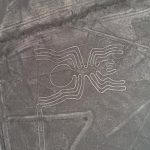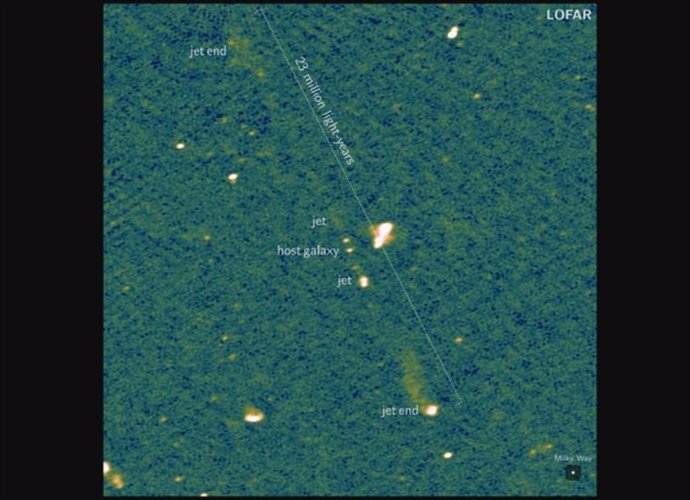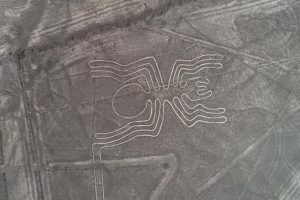This image, taken by the European LOFAR (LOw Frequency ARray) radio telescope, shows the longest known pair of black hole jets. – CALTECH
September 18 () –
Astronomers have discovered the largest pair of black hole jets ever seen, measuring 23 million light-years across. That’s equivalent to lining up 140 Milky Way galaxies one after the other.
“This pair is not just the size of a solar system or a Milky Way; we’re talking about 140 Milky Way diameters in total,” he says. in a statement Martijn Oei, a postdoctoral researcher at Caltech and lead author of a new Nature paper reporting the findings. “The Milky Way would be a tiny dot in these two giant eruptions.”
The jet megastructure, nicknamed Porphyrion after a giant from Greek mythology, dates back to a time when our universe was 6.3 billion years old, or less than half its current age of 13.8 billion years. These ferocious jets, with a total power equivalent to trillions of suns, are shooting from above and below a supermassive black hole at the heart of a remote galaxy.
Prior to the discovery of Porphyrion, the largest confirmed jet system was Alcyoneus, also named after a giant in Greek mythology. Alcyoneus, which was discovered in 2022 by the same team that found Porphyrion, spans the equivalent of about 100 Milky Ways. For comparison, the well-known jets of Centaurus A, the closest jet system to Earth, span 10 Milky Ways.
The latest finding suggests that these giant jet systems may have had a greater influence on galaxy formation in the early universe than previously thought. Porphyrion existed during an early epoch when the wispy filaments that connect and feed galaxies, known as the cosmic web, were closer together than they are now. That means that huge jets like Porphyrion They extended over a larger portion of the cosmic web compared to the jets of the local universe.
“Astronomers believe that galaxies and their central black holes co-evolve, and a key aspect of this is that jets can spread enormous amounts of energy that affect the growth of their host galaxies and other nearby galaxies,” says co-author George Djorgovski, professor of astronomy and data science at Caltech. “This discovery shows that “Its effects may extend much further than we thought.”
The Porphyrion jet system is the largest ever found during a sky survey that has revealed a shocking number of faint megastructures: more than 10,000. This huge population of gigantic jets was found using the European LOFAR (LOw Frequency ARray) radio telescope.
While hundreds of large jet systems were known prior to LOFAR observations, they were thought to be rare and, on average, smaller than the thousands of systems discovered by the radio telescope.
“Giant jets were known before we started the campaign, but we had no idea there would turn out to be so many of them,” said Martin Hardcastle, second author of the paper and a professor of astrophysics at the University of Hertfordshire in England. “Normally when we get a new observing capability, like LOFAR’s combination of a wide field of view and very high sensitivity to extended structures, we find something new, but it was still very exciting to see so many of these objects emerging.”
In 2018, Oei and his colleagues began using LOFAR to study not black hole jets, but the cosmic network of faint filaments that crisscross the space between galaxies. As the team inspected radio images for the faint filaments, began to notice several surprisingly long jet systems.
“When we first found the giant jets, we were quite surprised,” says Oei, who is also affiliated with the Leiden Observatory in the Netherlands. “We had no idea there were so many.”
To systematically search for more hidden jets, the team inspected radio images with the naked eye, used machine learning tools to scan the images for signs of approaching jets, and enlisted the help of citizen scientists around the world to examine the images in more detail. A paper describing their most recent series of giant jets, which contains more than 8,000 jet pairs, has been accepted for publication in the journal Astronomy & Astrophysics.
7.5 BILLION LIGHT YEARS AWAY
To find the galaxy from which Porphyrion originated, the team used the Giant Meter-wave Radio Telescope (GMRT) in India along with auxiliary data from a project called the Dark Energy Spectroscopic Instrument (DESI), which operates from Kitt Peak National Observatory in Arizona. The observations pinpointed the jets’ home to a massive galaxy about 10 times more massive than our own Milky Way.
The team then used the W. M. Keck Observatory in Hawaii to show that Porphyrion is 7.5 billion light-years from Earth. “Until now, these giant jet systems seemed to be a phenomenon of the recent universe,” says Oei. “If distant jets like these can reach the scale of the cosmic web, then every place in the universe may have been affected by black hole activity at some point in cosmic time“, says Oei.
The Keck observations also revealed that Porphyrion emerged from what is called a radiatively active black hole, as opposed to one that is in a jet mode state.













![[Img #74676]](https://thelatestnews.world/wp-content/uploads/2024/12/Laser-artificial-neuron-300x200.jpg)

Add Comment